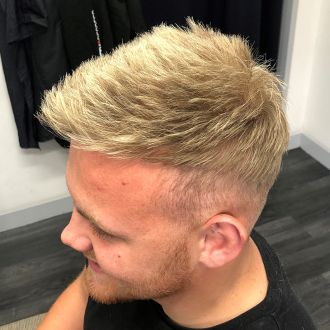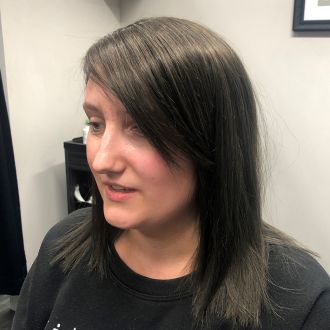Female Pattern Baldness
Hair Loss in Women
Hair loss in women, particularly female pattern baldness (FPB), is a prevalent but often misunderstood condition. It not only affects physical appearance but can also have deep emotional and psychological impacts. This guide provides a comprehensive overview of female pattern baldness, shedding light on its causes, the typical patterns it follows, and the treatment options available. Whether you’re experiencing early signs of hair thinning or are in the midst of dealing with this condition, understanding FPB is the first step towards managing it effectively and regaining your confidence.
What Causes Female Pattern Baldness?
Female Pattern Baldness is most common in women in their 50’s and 60’s as the menopause affects the hormone levels in the body causing Dihydrotestosterone (DHT) to begin the cycle of miniaturisation which eventually leads to very fine hair throughout the scalp; however, it’s possible for FPB to appear at any age.
Typically women will notice their hair beginning to thin evenly on the crown and top of the scalp whereas the front hairline and temples often remain unaffected.
Female Pattern Baldness and Genetics
Over 60% of women will experience Female Pattern Baldness (FPB) at some stage in their lives. Also known as Androgenetic Alopecia, this condition is genetically inherited, so if your parents or grandparents experienced hair thinning and loss, you’re more likely to experience it too.
Other Hair Loss risk factors for women include:
Hormonal changes due to pregnancy, childbirth, menopause and thyroid problems can lead to hair loss among women. Immune system-related medical conditions, including Alopecia Areata and Trichotillomania (a hair-pulling disorder), are also common hair loss causes.
Hair loss can be a side effect of medications and supplements such as those used for arthritis, depression, heart problems, gout and high blood pressure.
Radiation therapy & Chemotherapy, as well as medication for cancer treatment, can lead to hair loss. Due to the harsh effects of treatment on the hair follicles, the hair may not grow back the same as it was before.
Many people experience a general thinning of hair several months after a physical or emotional shock. This type of hair loss is temporary.
Hairstyles which pull the hair follicle tight (such as a tight ponytail or braids) can cause a type of hair loss called traction alopecia. Hot-oil hair treatments and perms also can cause hair to fall out. If scarring occurs, hair loss could be permanent.
Our Experts






Treatment for Female Pattern Baldness
FPB is combatable in the early stages using a combination of topical treatments and Laser Therapy, though advanced cases may be more suited to hair replacement systems.
Some women find concealment products such as keratin fibres, which electrostatically charge to each hair shaft to give the appearance of fuller hair, a welcome break from the embarrassment of a visible scalp.
If you’ve noticed your hair is becoming finer, or your ‘ widow’s peak’ is becoming noticeably more prominent, get in touch for a free consultation and our specialists will be happy to go through our different treatments